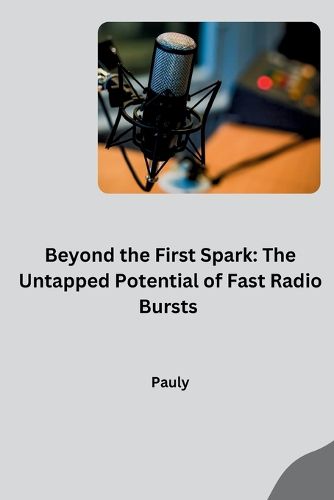Readings Newsletter
Become a Readings Member to make your shopping experience even easier.
Sign in or sign up for free!
You’re not far away from qualifying for FREE standard shipping within Australia
You’ve qualified for FREE standard shipping within Australia
The cart is loading…






Fast radio bursts (FRBs) have captured astronomers' imaginations. These fleeting, hyper-bright flashes of radio waves hold immense potential, but their secrets remain locked away. Here's why they're so intriguing: Imagine a million-solar-brightness burst of radio waves lasting a mere millisecond. That's an FRB - a cosmic enigma. Their fleeting nature and unknown origins make them challenging to study. But astronomers believe they hold the key to unlocking mysteries of the universe. FRBs might originate from violent events like colliding neutron stars or even new types of stellar objects. By unraveling their source, we could gain insights into powerful, poorly understood phenomena. Additionally, studying FRBs could help us map the vast cosmic web of gas and matter in the universe. These bursts act like cosmic probes, their radio waves traveling through space relatively unscathed. By analyzing how the signal interacts with matter, scientists could create a 3D map of the universe's hidden structures. FRBs are far from just celestial fireworks; they're potential beacons guiding us towards a deeper understanding of the cosmos.
$9.00 standard shipping within Australia
FREE standard shipping within Australia for orders over $100.00
Express & International shipping calculated at checkout
Stock availability can be subject to change without notice. We recommend calling the shop or contacting our online team to check availability of low stock items. Please see our Shopping Online page for more details.
Fast radio bursts (FRBs) have captured astronomers' imaginations. These fleeting, hyper-bright flashes of radio waves hold immense potential, but their secrets remain locked away. Here's why they're so intriguing: Imagine a million-solar-brightness burst of radio waves lasting a mere millisecond. That's an FRB - a cosmic enigma. Their fleeting nature and unknown origins make them challenging to study. But astronomers believe they hold the key to unlocking mysteries of the universe. FRBs might originate from violent events like colliding neutron stars or even new types of stellar objects. By unraveling their source, we could gain insights into powerful, poorly understood phenomena. Additionally, studying FRBs could help us map the vast cosmic web of gas and matter in the universe. These bursts act like cosmic probes, their radio waves traveling through space relatively unscathed. By analyzing how the signal interacts with matter, scientists could create a 3D map of the universe's hidden structures. FRBs are far from just celestial fireworks; they're potential beacons guiding us towards a deeper understanding of the cosmos.